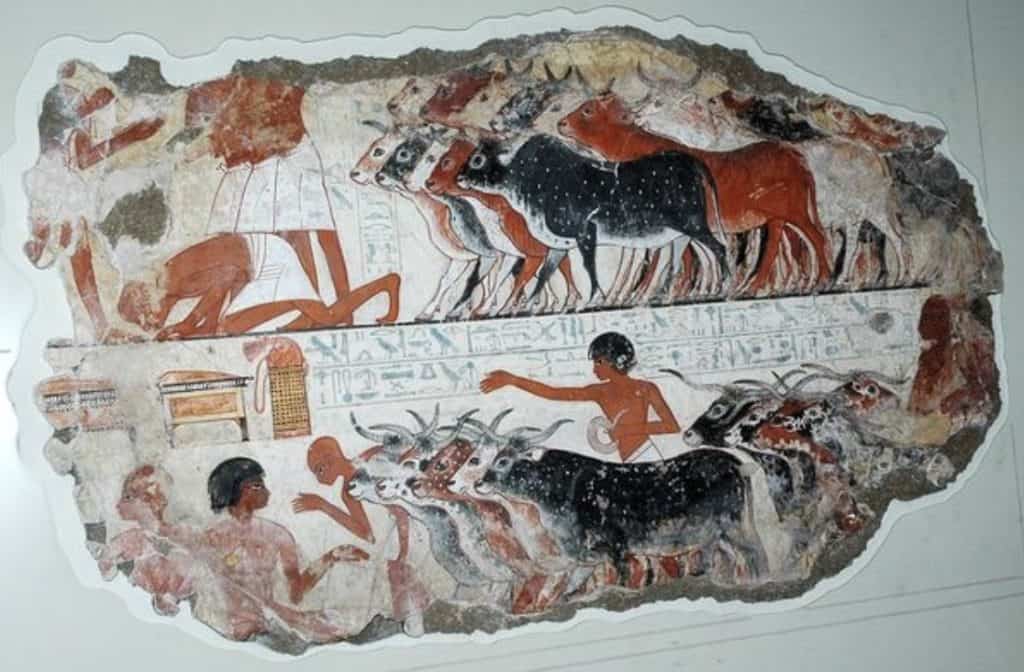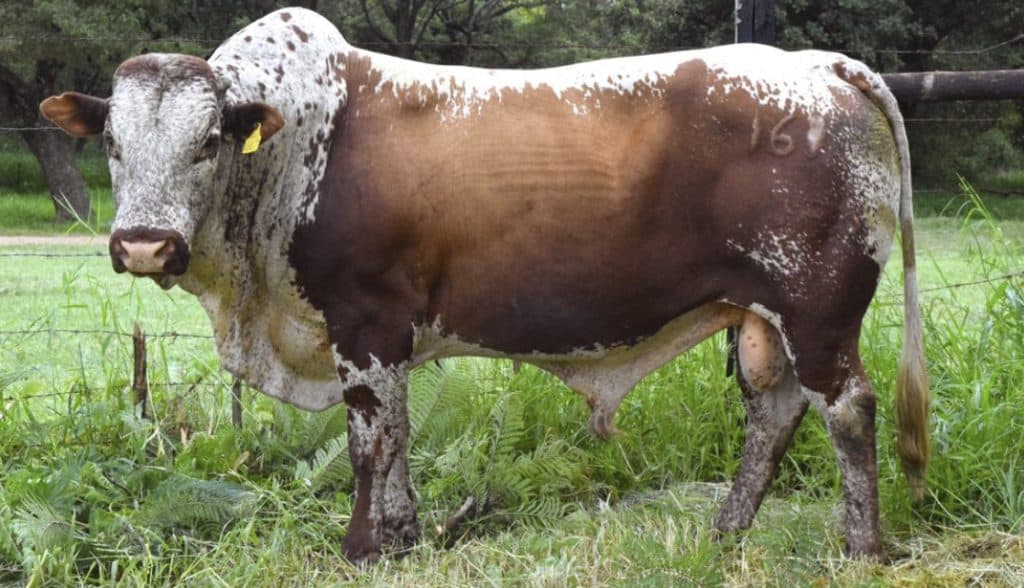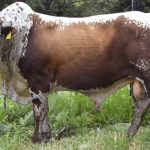ZIMBABWE HERD BOOK-YEAR OF THE NKONE 2023
NEWSLETTER FROM HHN and MH NKONE STUDS
No 7 (6th November 2022)
By SEKURU
NOTE: Thank you to the readers of these newsletters and those who have discussed or debated some of the issues. This is healthy and what I originally intended. I am by no means an expert but just an ordinary farmer who loves his cattle and I have my own ideas and way of doing things, which will not necessarily be the same as those of others and are not necessarily better ideas.
Please forgive me if my topics are a bit repetitive at times, some are very important in my mind.
Every one of us has something to learn from others. If these newsletters achieve that, I am happy.
A BIT OF HISTORY
I get many requests about the origins of our Nkone cattle and why they are named Nkone so here is a brief history of our breed.
It all started with the Aurochs (Bos primiginius) which were the ancestors of all modern cattle breeds, both Bos taurus (Taurine) and Bos indicus (Zebu) types. They originated and lived in Eurasia and Northern Africa from the Pleistocene Age about 2 million years ago to 390 years ago. They began to be domesticated by man between 10 000 and 8 000 years ago. The Aurochs was a large animal, with massive, heavy horns and bulls stood around 1.5 to 1.8m at the shoulder and cows between 1.4 and 1.6m. They weighed between 700 and 1500 Kg. The last wild Aurochs, a cow, died of natural causes in a forest in Poland in 1627.
The three genetic groups that make up the indigenous Sanga cattle breeds in Zimbabwe occurred in North Africa as follows: European Bos Taurus from Europe in two waves, about 6000BC and 2500BC, Bos Indicus from the Indus Valley in Asia also in two waves about 2000BC and 700AD (the latter with the Arab/Somali invasions down the east coast of Africa) and the African Bos Taurus which were domesticated in North Africa around 7 000 to 10 000 years ago.
There is no doubt that the ancestors of the Nkone cattle of today were present in North Africa and Ancient Egypt many thousands of years ago. This is clearly illustrated in paintings and drawings of ancient cattle in these areas as far back as 8000BC which show that many of them were multi-coloured (speckled) and had lyre-shaped horns. These ancient cattle were phenotypically very like present day Nkone cattle, but without the slight Sanga neck hump which probably came later from the small Zebu admixture. The Old Testament tells us of Jacob’s speckled cattle, around 1750 BC.
The migration of people down the African continent brought with them cattle from the Ethiopian and Somali region where all African breeds originated. Sanga cattle came here in this way, firstly with the Kohekohe people 2000 years ago and later with the Bantu migrations in about 300-700AD. The African Zebus originated in the Indus Valley and were brought to Africa by Arabs and Somalis in two waves, firstly to the Ethiopian area 1500 years ago and then later, in about 700AD, down Central Africa and the East Coast of Africa.
The cattle which eventually arrived in Zululand became known as Nguni after their owners, the Nguni (Zulu) people, and have been there ever since. Sanga cattle of a specific ecotype, related to the Nguni, are called Landim in modern Mozambique, occurring mainly in the Gaza Province, southwards to the Limpopo River. Modern Landim of Mozambique and Nkone and Gaza Nguni cattle of Zimbabwe are similar as are the Kashivi, another Sanga Nguni ecotype from the Caprivi Strip and Ovamboland in Northern Namibia. They are all derivatives of the original Nguni. During their passage from the north of the continent over many centuries these ancestors of the Sanga were exposed to harsh extremes of climate and the tropical diseases of Africa. Natural selection favoured those animals genetically suited to survive and produce offspring in this hostile environment.
Frequent migrations and major local movements of people and their cattle took place throughout Southern and Central Africa up to the end of the 19th Century, mostly due to wars and drought. Migrations which resulted in the further establishment of Gaza Nguni cattle in Zimbabwe were those of the Tsonga/Hlengwe around 1750, followed by the Gaza Nguni in 1830 into Eastern Zimbabwe, and finally the Ndebele with their Nguni cattle into Matabeleland in 1840; all were originally from south of the Limpopo River on the Indian Ocean coast and Zululand.
In 1830 groups of Nguni (Zulu) people fled the unrest and inter-tribal warfare then taking place in King Chaka’s Zululand and surrounding areas during the bloody wars of the “Mfecane” of the time. They consisted of factions and tribes of the warlike Nguni, some of whom eventually arrived and settled in Zimbabwe. One group (the Gaza Nguni of Soshangana Nxumalo, which later became known as the Machangana) moved northwards up the Eastern seaboard and inland up the Savé River to the Chipinge highlands near Mount Chirinda in Zimbabwe. They subjugated the people over a large part of the surrounding area including Chief Mahenye’s area and the Savé Valley below their capitol in the mountains. Soshangana Nxumalo created the Gaza Empire, eventually controlling a large area of land between the Limpopo and the Zambezi Rivers in the central and eastern part of present-day Zimbabwe and East to the Mozambique coastline. The Gaza Nguni grazed their large herds of Nguni cattle throughout the middle and lower Savé Valley where they mixed with local cattle and with cattle captured and bartered from the conquered tribes of the area.
The same disturbances in Zululand and environs; the “Mfecane” that drove away King Soshangana and his Machangana, also affected another sector of the Nguni Zulu, the Ndebele tribe under their leader Mzilikazi Khumalo. After many years of warfare and migration King Mzilikazi and his Ndebele nation finally settled at Bulawayo in Matabeleland in what is now Zimbabwe. The Ndebele nation under King Mzilikazi and later his son, King Lobengula, consolidated and created a militarist system of regimental kraals throughout the conquered area, in typical Nguni fashion. Central to the regimental kraal system were the Ndebele “Matabele Cattle” under the protection and management of Queens (some of the Kings wives and sisters) and regimental commanders responsible to the King. Living huts were placed in a large defensive circle surrounding the cattle kraal protected by a strong thorn tree fence. Each regimental kraal in favoured grazing areas cared for a number of what were known as the King’s Cattle. Each Ndebele regiment was identified by the colours and patterns of their cow-hide shields and the different coloured cattle were kept and bred in separate herds, cared for by a particular regiment. There still are many Ndebele names for specific colours, patterns and horn shapes.
Although theoretically, all cattle belonged to the king, King Mzilikazi had his personal herds which were all of the “Nkone” colour and pattern. These were basically red and white coloured with solid red side panels and white top and bottom lines interspersed with red speckling. This colour pattern later became very popular with the first Commercial Farmers and eventually became a requirement in order to register cattle at the highest level with The Nkone Cattle Club. So, the name of the colour pattern became the name of the cattle with Commercial Farmers. At a later date, the name was changed to Nguni, after the original breed in South Africa and the Nguni Cattle Breeders Society of Zimbabwe was formed. Most of the herds and the Society became redundant in the early twenty twenties, but the Society has now been resuscitated. Now the Nkone Cattle Breeders Society of Zimbabwe, new members have been recruited and new herds registered since 2020. The cattle are once again called Nkone, as they were before, because the new Society and members wanted an exclusive name for what is very much a Zimbabwean Indigenous Breed although we still recognise its relationship to the South African Nguni and other Nguni ecotypes, and the importance of that for future breeding.
“NKONE, THE ORIGINAL ALPHA MOTHER COW”

Ancient Egyptian cattle, the ancestors of our Nkone, showing speckled patterns and colours and lyre shaped horns.

Multi coloured hides and lyre shaped horns of cattle in ancient Egypt.

Present day Zimbabwean Nkone calves.

Zimbabwean Nkone bull showing typical “Nkone” colouration.

Mahenye Gaza Nguni cow and calf, Southeast Lowveld of Zimbabwe.










